My first 200% increase, time to take some profit.
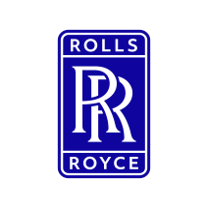
Rolls-Royce
Price
Debate sobre RR.
Puestos
96📊 Market Update (November 3, 2025)
The week kicks off with a strong, but highly selective, risk-on rally. Markets are piling into quality Tech and European Financials, while simultaneously selling off Chinese retail and speculative growth names.
🇺🇸 US Equities (Pre-market/Early Trading)
$SPX500 — Trading solidly higher, driven by strong performance in Tech and Financials.
$DJ30 — Moving up, following the broad positive sentiment.
$NSDQ100 — Leading the gains, as major tech components are firmly in the green.
💻 Tech & Growth Snapshot
$NVDA (-0,38 %) — Advancing higher, leading the AI and semiconductor space.
$GOOGL (+0,87 %) — Moving up, showing solid strength in the mega-cap tech space.
$AVGO (+2,77 %) — Up moderately, participating in the semiconductor rally.
$META (+1,61 %) — Showing strong gains, continuing its upward momentum.
$MSFT (+0,4 %) — Up slightly, tracking the positive tech trend.
$TSM (+0,6 %) — Up slightly, showing resilience in the chip sector.
$RR. (-0,4 %) — Up moderately, the industrial/aerospace stock shows strength.
$RKLB (-1,18 %) — Down slightly, underperforming as speculative growth faces pressure.
$RGTI (-6,41 %) — Down sharply, quantum stocks are experiencing significant selling.
🛍️ Retail & Commerce
$AMZN (+0,17 %) — Up moderately, participating in the mega-cap rally.
$BABA (+0 %) — Falling sharply, the main source of weakness in the market today, dragging down the retail sector.
$CVNA (+0,36 %) — Up moderately, recovering some ground.
$SHOP (-0,58 %) — Down moderately, likely pulled down by the negative sentiment from $BABA$.
⚕️ Health & Pharmaceutical
$LLY (-0,32 %) — Likely flat or slightly down, as investors rotate out of defensive pharma names.
$HIMS (-1,86 %) — Holding steady, showing no significant price change.
$INSM (-0,57 %) — Flat, the biotech sector remains cautious.
🇪🇺 Europe & Industrials
STOXX 600 — Trading higher, led by a strong rally in the banking sector.
GER40 — Trading cautiously higher, reflecting the positive sentiment.
$LDO (+0,25 %) — Up strongly, the defense sector is showing significant strength.
$IBE (-0,44 %) — Down slightly, utilities lag as investors move away from defensive assets.
$OKLO — Holding steady, the nuclear tech stock is flat.
$CS (+0,27 %) — Up moderately, joining the rally in European financials.
🏦 Banking & Finance
$UCG (-1,1 %) — Advancing higher, part of the strong European banking rally.
$ISP (-0,11 %) — Up strongly, showing clear outperformance.
$BPE (-1,38 %) — Surging higher, continuing its massive rally and leading the Italian banks.
$CE (-0,55 %) — Up strongly, another standout performer in the Italian banking sector.
$BBVA (-1,52 %) — Up strongly, the Spanish bank is showing significant gains.
$AXP (+0,02 %) — Up moderately, the payments sector is positive.
$V (+1,38 %) — Down slightly, counter-trending the financial sector's strength.
🌏 Asia
$JPN225 / $KOSPI / $HK50 / $CHINA50$ — Likely closed mixed to negative, heavily impacted by the sharp sell-off in $BABA$.
_p_ Forex
$DXY — The Dollar Index is trading loweras risk appetite favors other currencies.
$EURUSD — Moving higheragainst a weaker Dollar.
$USDJPY — Drifting loweras the Yen gains some ground.
💎 Commodities & Precious Metals
$GLD (-0,17 %) — Holding steady, gold is flat as investors move into equities rather than safe havens.
$CDE (-0,83 %) — Flat, mirroring gold's lack of direction.
$BRENT / $WTI — Likely trading higheron risk-onsentiment and a weaker Dollar.
💰 Crypto
$BTC (-3,16 %) / $ETH (-3,63 %) — Likely moving higher, following the Nasdaq and the risk-onmood.
$TRX (-0,21 %) — Down slightly, underperforming the broader crypto sentiment.
$CRO (-0,21 %) — Not shown, likely tracking the positive risk-ontrend.
📈 Benchmark ETFs
$VOO (+0,21 %) / $VGT (+0,43 %) / $CNDX — Holding steady (from image), but the underlying components signal they are trading higher.
$BND (-0,12 %) — Flat, as bond yields likely rise (prices fall) in a risk-onmove.
🔎 Deep Dive: The "Quality Growth" Rally
Today is a "flight to quality growth." The market is not buying everything; it is highly selective. There is clear strength in established Tech ($NVDA, $GOOGL) and a massive rally in European Banks ($BPE.MI, $BBVA.MC). However, there is clear weakness in Chinese Retail ($BABA, $SHOP) and speculative Tech ($RGTI, $RKLB). This divergence signals that investors are willing to take risks, but only on assets with strong fundamentals or clear momentum, while dumping assets exposed to Chinese macro or high speculation.
Follow the Analysis:
For daily real-time market insights, deep dives, and trading discussions, follow me on X: https://x.com/ThomasVioli
To copy my portfolio, strategies, and complete trade insights, you can follow me on eToro: https://www.eToro.com/people/farlys
⚠️ Disclaimer:Past performance is not indicative of future results. Investing involves risks, including the loss of capital.
Share analysis aviation industry ✈️
Airbus
Air France-KLM
Boeing
Bombardier
Dassault Aviation
Embraer
Fraport
GE Aerospace
Honeywell
Lufthansa
MTU Aero Engines
Pratt & Whitney
RollsRoyce
Saffron
$AIR (-0,36 %)
$BA (+0,09 %)
$LHA (+0,11 %)
$FRA (-0,14 %)
$GE
$HON (-0,45 %)
$MTX (+0,67 %)
$RR. (-0,4 %)
$EMBR3
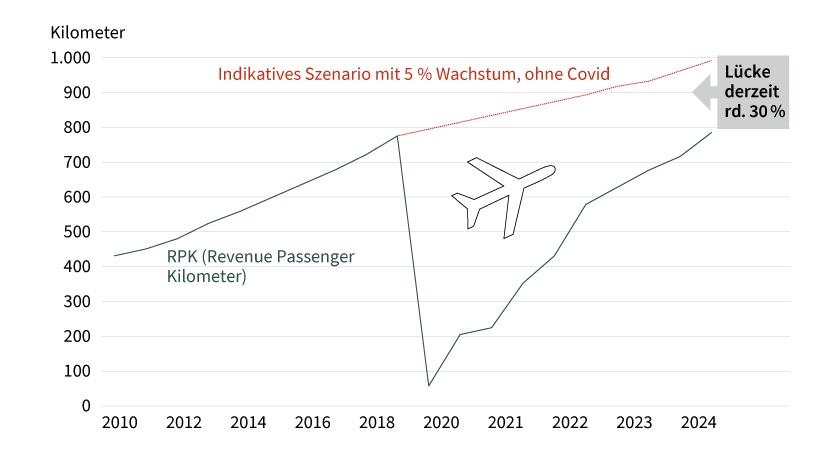
📊 Market Update (October 31, 2025)
It's the last day of the month, and the market is exploding higher, in a strong risk-onmove driven by a series of stellar earnings in the Tech sector. The day is dominated by impressive rallies, although key divergences remain.
🇺🇸 US Equities (Pre-market/Open)
$SPX500 — Futures are moving decidedly higher, driven by the Mega-Cap rally.
$DJ30 — Up, as positive sentiment spreads.
$NSDQ100 — In a strong rally, the index is being pulled higher by $AMZN$ and $GOOGL$.
💻 Tech & Growth Snapshot
$NVDA (-0,38 %) — In a solid rise, the stock is outperforming and leading the AI sector.
$GOOGL (+0,87 %) — Rallying strongly, the market reacts with euphoria to its earnings, pushing the stock higher.
$AVGO (+2,77 %) — Slightly down, counter-trending the sector, showing weakness.
$META (+1,61 %) — Up, the stock is recovering lost ground and joining the positive sentiment.
$MSFT (+0,4 %) — Slightly up, attempting a modest recovery along with the Nasdaq rally.
$TSM (+0,6 %) — Slightly up, showing resilience in the chip sector.
$RR. (-0,4 %) — Slightly down, the industrial/aerospace sector is weak.
$RKLB (-1,18 %) — Slightly up, showing cautious optimism in the new techspace.
$RGTI (-6,41 %) — Up, the quantum sector follows the speculative sentiment.
🛍️ Retail & Commerce
$AMZN (+0,17 %) — Exploding higher, the stock is dominating the market with an impressive rally, clearly following earnings that beat all expectations.
$BABA (+0 %) — Falling sharply, continuing its negative performance, crashing against the US tech trend.
$CVNA (+0,36 %) — Up, the stock is participating in the risk-onmove and recovering ground.
$SHOP (-0,58 %) — Stable, failing to benefit from the $AMZN rally.
⚕️ Health & Pharmaceutical
$LLY (-0,32 %) — Slightly down, the defensive Pharma sector is being sold as capital rotates into Tech.
$HIMS (-1,86 %) — Stable, awaiting catalysts.
$INSM (-0,57 %) — Stable, the biotech sector is flat.
🇪🇺 Europe & Industrials
STOXX 600 — Mixed, Europe is not fully participating in the US rally.
GER40 — Mixed/Slightly down, reflecting uncertainty.
$LDO (+0,25 %) — Slightly up, the defense sector shows some strength.
$IBE (-0,44 %) — Slightly up, utilities are stable/positive.
$OKLO — Stable, the nuclear stock is flat.
$CS (+0,27 %) — Down, the European financial sector is weak.
🏦 Banking & Finance
$UCG (-1,1 %) — Slightly up, the Italian banking sector is mixed.
$ISP (-0,11 %) — Slightly up, showing modest strength.
$BPE (-1,38 %) — Solidly up, continuing its outperformance and positive trend.
$CE (-0,55 %) Up, another strong performer in Italian banking.
$BBVA (-1,52 %) — Up, the Spanish bank is recovering ground.
$AXP (+0,02 %) — Slightly down, the payments sector is weak.
$V (+1,38 %) — Down, following the weakness in $AXP$.
🌏 Asia
$JPN225 / $KOSPI / $HK50 / $CHINA50 — Closed mixed/negative, weighed down by weakness in Chinese stocks ($BABA$).
💱 Forex
$DXY — The Dollar Index is stable/slightly down, reflecting the conflicting sentiment.
$EURUSD — Stable/Slightly upagainst a weaker Dollar.
$USDJPY — Stable.
💎 Commodities & Precious Metals
$GLD (-0,17 %) — Stable, gold is flat, not benefiting from the defensive sell-off or the tech risk-on.
$CDE (-0,83 %) — Stable, following gold.
$BRENT / $WTI — Down, oil is dropping due to demand fears (e.g., $BABA data).
💰 Crypto
$BTC (-3,16 %) / $ETH (-3,63 %) — Up, crypto is following the risk-onrally led by $AMZN and $GOOGL.
$TRX (-0,21 %) — Up, the altcoin sector is participating in the positive sentiment.
$CRO (-0,21 %) — Up, in line with the sector.
📈 Benchmark ETFs
$VOO (+0,21 %) / $VGT (+0,43 %) / $CNDX — The real sentiment is being pulled higher by their main components.
$BND (-0,12 %) — Stable, investors are also looking for safety in bonds.
🔎 Deep Dive: The Great Earnings Divergence
Today is the definition of a "stock market," not a "market of stocks." There is no single sentiment. Quarterly results are creating massive divergences:
1. The Winners: $AMZN (+0,17 %) and $GOOGL (+0,87 %) are on fire, saving the $NSDQ100 single-handedly.
2. The Losers: $BABA (+0 %) is collapsing, signaling weakness in Chinese and speculative retail.
3. The Isolated Strong:Italian banks ($BPE (-1,38 %) , $CE (-0,55 %) ) and $BBVA (-1,52 %) continue to outperform.
4. The Defensives:Gold ($GLD (-0,17 %) ) is flat, while Pharma ($LLY (-0,32 %) ) and European financials ($CS (+0,27 %)
) are weak.
Follow the Analysis:
For daily real-time market insights, deep dives, and trading discussions, follow me on X: https://x.com/ThomasVioli
To copy my portfolio, strategies, and complete trade insights, you can follow me on eToro: https://www.eToro.com/people/farlys
⚠️ Disclaimer:Past performance is not indicative of future results. Investing involves risks, including the loss of capital.
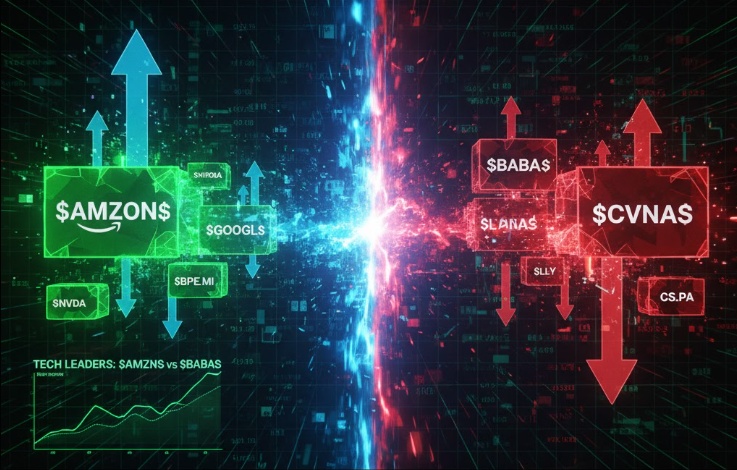
📊 Market Update (October 30, 2025)
🇺🇸 US Equities (Pre-market/Early Trading)
$SPX500 — Indicating a sharp decline, as the collapse in major tech components weighs heavily on the index.
$DJ30 — Trading significantly lower, pulled down by the broad *risk-offsentiment.
$NSDQ100 — Falling sharply, dragged down by heavy losses in major tech names.
💻 Tech & Growth Snapshot
$NVDA (-0,38 %) — Down slightly, showing significant resilience and holding up well compared to the broader tech wreck.
$GOOGL (+0,87 %) — Surging dramatically higher, completely defying the market sell-off, likely on a stellar earnings report.
$AVGO (+2,77 %) — Up moderately, showing strong relative strength in the semiconductor sector.$META (+1,61 %) — Collapsing, in a sharp sell-off likely due to a major earnings miss.
$MSFT (+0,4 %) — Falling sharply, a massive drop indicating a very negative reaction to its earnings, pulling the $SPX500$ down.
$QBTS (-5,58 %) Not shown, but likely down significantly*in this *risk-offenvironment for speculative tech.
$RGTI (-6,41 %) — Down moderately, following the negative sentiment in speculative tech.
$TSM (+0,6 %) — Down slightly, giving back some recent gains.
$RR. (-0,4 %) — Down moderately, the industrial/aerospace sector is weak.
$RKLB (-1,18 %) — Up slightly, showing some resilience in the space sector.
🛍️ Retail & Commerce
$AMZN (+0,17 %) — Down moderately, reflecting weakness in consumer-focused tech.
$BABA (+0 %) — Down moderately, under pressure alongside other Chinese and e-commerce stocks.
$CVNA (+0,36 %) — Falling sharply, continuing its pattern of high volatility and weakness.
$SHOP (-0,58 %) — Down moderately, indicating pressure on e-commerce platforms.
⚕️ Health & Pharmaceutical
$LLY (-0,32 %) — Likely flat or slightly down, as investors rotate out of defensive names or brace for the downturn.
$HIMS (-1,86 %) — Holding steady, showing no significant price change.
$INSM (-0,57 %) — Flat, the biotech sector remains cautious.
🇪🇺 Europe & Industrials
STOXX 600 — Trading lower, struggling as the US tech crash impacts global sentiment.
GER40 — Trading cautiously lower, reflecting the uncertain global sentiment.
$LDO (+0,25 %) — Down moderately, suggesting pressure on the defense sector.
$IBE (-0,44 %) — Down slightly, utilities are also facing some selling pressure.
$OKLO Down moderately, indicating profit-taking in the nuclear technology space.
$CS (+0,27 %) — Down moderately, reflecting broader caution across parts of the European financial sector.
🏦 Banking & Finance
$UCG (-1,1 %) — Down moderately, following the negative trend in European financials.
$ISP (-0,11 %) — Down slightly, showing some weakness.
$BPE (-1,38 %) — Making moderate gains, continuing its strong counter-trend rally.
$CE (-0,55 %) — Up slightly, joining the isolated strength in Italian mid-cap banks.
$BBVA (-1,52 %) — Falling sharply, showing significant weakness and vulnerability.
$AXP (+0,02 %) — Down moderately, reflecting caution in the payments sector.
$V (+1,38 %) — Down slightly, mirroring the hesitation seen in other payment stocks.
🌏 Asia
$JPN225 / $KOSPI / $HK50 / $CHINA50 — Likely closed mixed to negative*as the US tech crash sentiment spread.
💱 Forex
$DXY — The Dollar Index is likely trading higher*as investors flee to safety (cash).
$EURUSD — Likely edging lower*against a stronger Dollar.
$USDJPY — Likely trading higher*reflecting the strong Dollar.
💎 Commodities & Precious Metals
$GLD (-0,17 %) — Holding steady, pausing as investors prefer the $DXY$ as the primary safe haven over gold.
$CDE (-0,83 %) — Flat, mirroring gold's lack of direction.
$BRENT / $WTI (W&T Offshore Inc) — Likely trading down*as growth concerns spike, tempering demand outlook.
💰 Crypto
$BTC (-3,16 %) / $ETH (-3,63 %) — Likely experiencing significant downward pressure, following the Nasdaq crash.
$TRX (-0,21 %) — Holding steady, though the broader crypto market is likely weak.
$CRO (-0,21 %) — Likely tracking the negative trend in crypto.
📈 Benchmark ETFs
$VOO (+0,21 %)
$VGT (+0,43 %)
$CNDX — Holding steady (0.00%) in the image, likely reflecting a pre-market halt or lag, but they are clearly heading for a sharp drop*based on their components.
$BND (-0,12 %) — Flat, as bond yields likely fall (prices rise) during the flight to safety.
🔎 Deep Dive: The Great Tech Divergence
Today's story is a brutal earnings-driven divergence. The market is split in two: $MSFT (+0,4 %) and $META (+1,61 %) are collapsing, pulling the entire $SPX500 and risk-onsentiment down with them. Retail stocks like $BABA and $AMZN are falling in sympathy.
However, $GOOGL (+0,87 %) is surging dramatically, completely disconnecting from the sector on what must be a stellar earnings report. This divergence shows the market is differentiating between AI narratives: $NVDA (-0,38 %) is also holding up remarkably well (down only slightly), while other tech ($TSM (+0,6 %) , $AVGO (+2,77 %) ) is mixed.
Away from tech, Italian banks ($BPE (-1,38 %)) continue their isolated rally, but the overall mood is clearly *risk-off*.
Follow the Analysis:
For daily real-time market insights, *deep dives*, and trading discussions, follow me on X: https://x.com/ThomasVioli
To copy my portfolio, strategies, and complete trade insights, you can follow me on eToro: https://www.eToro.com/people/farlys
⚠️ Disclaimer:*Past performance is not indicative of future results. Investing involves risks, including the loss of capital.

📊 Market Update (October 29, 2025)
Markets are displaying a mixed and cautious tonetoday, struggling to sustain the post-FOMC optimism. While the Fed's dovish signals offer support, earnings reports and sector-specific dynamics are creating significant divergence across the board.
🇺🇸 US Equities (Pre-market/Early Trading)
$SPX500 — Futures suggest a hesitant start, leaning slightly negative as tech weakness offsets gains elsewhere.
$DJ30 — Trading sideways, lacking clear direction amid ongoing sector rotation.
$NSDQ100 — Showing noticeable pressure, pulled down by declines in several major tech components.
💻 Tech & Growth Snapshot
$NVDA (-0,38 %) — Surging significantly higher, clearly outperforming the market and reinforcing its leadership in the AI space.
$GOOGL (+0,87 %) — Trading moderately higher, participating in some tech strength but lagging behind leaders like NVDA.
$AVGO (+2,77 %) — Experiencing a slight pullback, indicating mixed sentiment within the semiconductor sector.
$META (+1,61 %) — Essentially flat, hovering around the previous close with little momentum.
$MSFT (+0,4 %) — Trading sideways, showing stability but lacking strong buying interest.
$QBTS (-5,58 %) — Likely pulling back sharply, mirroring the negative trend in other speculative quantum names.
$RGTI (-6,41 %) — Undergoing a significant correction, suggesting sharp profit-taking is hitting the quantum computing sector.
$TSM (+0,6 %) — Climbing steadily higher, demonstrating notable resilience and strength within the chip industry.
$$RR. (-0,4 %) — Edging slightly lower, reflecting a cautious stance in the industrial and aerospace sector.
$RKLB (-1,18 %) — Showing modest gains, indicating some investor interest in the space exploration theme.
🛍️ Retail & Commerce
$AMZN (+0,17 %) — Drifting slightly lower, reflecting caution surrounding consumer-focused tech giants.
$BABA (+0 %) — Falling sharply, significantly underperforming due to persistent pressures on Chinese equities.
$CVNA (+0,36 %) — Experiencing a minor dip, continuing its recent pattern of weakness.
$SHOP (-0,58 %) — Trading moderately lower, indicating pressure on e-commerce enablement platforms.
⚕️ Health & Pharmaceutical
$LLY (-0,32 %) — Likely trading slightly down or flat, as investors rotate out of defensive pharma names.
$HIMS (-1,86 %) — Holding steady, showing no significant price change.
$INSM (-0,57 %) — Flat, the biotech sector remains cautious.
🇪🇺 Europe & Industrials
STOXX 600 — Mixed performance, struggling to maintain direction as different sectors diverge.
GER40 — Trading cautiously, reflecting the uncertain global sentiment.
$LDO (+0,25 %) — Experiencing moderate declines, suggesting pressure on the defense sector.
$IBE (-0,44 %) — Showing slight gains, with utilities attracting some buying interest as a defensive play.
$OKLO — Pulling back moderately, indicating profit-taking in the nuclear technology space.
$CS (+0,27 %) — Trading moderately lower, reflecting broader caution across parts of the European financial sector.
🏦 Banking & Finance
$UCG (-1,1 %) — Making solid gains, clearly participating in the positive Italian banking trend.
$ISP (-0,11 %) — Climbing strongly higher, another standout performer among Italian banks today.
$BPE (-1,38 %) — Surging dramatically higher, a standout rally significantly outpacing the market.
$CE (-0,55 %) Registering strong gains, joining the broader surge in Italian banks.
$BBVA (-1,52 %) — Advancing solidly, the Spanish bank continues its upward trajectory.
$AXP (+0,02 %) — Edging slightly lower, reflecting caution in the payments sector ahead of data/earnings.
$V (+1,38 %) — Experiencing a minor dip, mirroring the hesitation seen in other payment stocks.
🌏 Asia
$JPN225 / $KOSPI / $HK50 / $CHINA50$ — Likely closed mixed to positive, carrying over optimism from the prior session.
💱 Forex
$DXY — The Dollar Index is trading mixed to slightly firmeras overall risk appetite fades somewhat.
$EURUSD — Likely edging loweragainst a relatively stable Dollar.
$USDJPY — Likely trading slightly higherreflecting cautious sentiment.
💎 Commodities & Precious Metals
$GLD (-0,17 %) — Holding steady, pausing after recent significant moves as markets digest Fed comments.
$CDE (-0,83 %) — Flat, mirroring gold's lack of direction.
$BRENT / $WTI — Likely trading mixed or slightly downas growth concerns temper demand outlook.
💰 Crypto
$BTC (-3,16 %) / $ETH (-3,63 %) — Likely experiencing downward pressure, following the weakness in the Nasdaq and broader tech sentiment.
$TRX (-0,21 %) — Holding steady, showing little movement.
$CRO (-0,21 %) — Not shown, likely tracking the mixed/negative trend in crypto.
📈 Benchmark ETFs
$VOO (+0,21 %) / $VG / $CNDX — Likely trading flat or slightly down, reflecting the mixed and cautious market action.
$BND (-0,12 %) — Likely holding steady or slightly upas bond yields stabilize.
🔎 Deep Dive: Market Divergence Post-FOMC
The initial excitement after the Fed's dovish comments has waned, revealing a highly fragmented market. While potential rate stability provides underlying support, company earnings and sector rotation are the main performance drivers today. Tech shows a clear split: leaders like $NVDA (-0,38 %) and $TSM (+0,6 %) power ahead, while others including $META (+1,61 %) , $BABA (+0 %) , and speculative names like $RGT face significant selling. European banks, particularly Italian ones ($UCG (-1,1 %)
$ISP (-0,11 %)
$BPE (-1,38 %) ) along with $BBVA (-1,52 %) , display remarkable strength, contrasting sharply with the caution seen in US payments ($AXP (+0,02 %) , $V (+1,38 %) ). Gold ($GLD (-0,17 %) ) is pausing, suggesting investors are neither fully embracing risk nor rushing to safety, but rather becoming highly selective.
Follow the Analysis:
For daily real-time market insights, deep dives, and trading discussions, follow me on X: https://x.com/ThomasVioli
To copy my portfolio, strategies, and complete trade insights, you can follow me on eToro: https://www.eToro.com/people/farlys]
⚠️ Disclaimer:Past performance is not indicative of future results. Investing involves risks, including the loss of capital.

📊 Market Update (October 28, 2025)
Markets open the day with cautious optimism, easing fears related to trade and inflation. Attention is focused on today's FOMC meeting and upcoming Big Tech earnings. The sentiment is generally *Risk-On*, but tempered by selective selling.
🇺🇸 US Equities (Pre-market)
$SPX500 — Futures are moving slightly higher, buoyed by easing geopolitical risks and below-expectation inflation data.
$DJ30 — Mixed/Stable, sentiment is cautious ahead of the Fed.
$NSDQ100 — Up, the Tech sector is the main beneficiary of a potential Fed pivot.
💻 Tech & Growth Snapshot
$NVDA (-0,38 %) — Up, AI stocks benefit from relief over the US-China trade deal hopes.
$GOOGL (+0,87 %) — Up, the Tech sector is leading.
$AVGO (+2,77 %) — Up, the semiconductor complex is solid thanks to easing trade tension prospects.
$META (+1,61 %) — Up, well-positioned for the earnings season.
$MSFT (+0,4 %) — Up, the stock benefits from Tech enthusiasm.
$QBTS (-5,58 %) — Up, *new techstocks attempt to recover from the correction.
$RGTI (-6,41 %) — Up, following the recovery in speculative sentiment.
$TSM (+0,6 %) — Solidly up, chip optimism is supported.
$RR. (-0,4 %) — Up, the Industrial/Aerospace sector shows strength.
$RKLB (-1,18 %) — Down slightly, experiencing profit-taking among aerospace *growthstocks.
🛍️ Retail & Commerce
$AMZN (+0,17 %) — Up, driven by *Risk-Onand Tech.
$BABA (+0 %) — Down, the Chinese stock faces profit-taking despite US-China trade deal hopes.
$CVNA (+0,36 %) — Up, the stock follows the trend.
$SHOP (-0,58 %) — Solid rise, retail tech is recovering.
⚕️ Health & Pharmaceutical
$LLY (-0,32 %) — Down slightly, the defensive Pharma sector sees mild profit-taking due to the *Risk-Onshift.
$HIMS (-1,86 %) — Up, in line with the general mood.
$INSM (-0,57 %) — Up, the biotech sector participates in the rally.
🇪🇺 Europe & Industrials
STOXX 600 — Decidedly positive*open, driven by macro hopes and rising yields.
GER40 — Solid rise, the German market is strong.
$LDO (+0,25 %) — Up, the defense sector is mixed/positive.
$IBE (-0,44 %) — Mixed/Slightly down, defensive *utilitiestend to lag in a *Risk-Onenvironment.
$OKLO — Up, nuclear *new techfollows the rally.
$$CS (+0,27 %) — Stable/Mixed, the European financial sector is cautious despite the *Risk-Onmood.
🏦 Banking & Finance
$$UCG (-1,1 %)
$ISP (-0,11 %) — Up, banks capitalize on rising bond yields.
$$BAMI (-0,68 %)
$CE (-0,55 %) , $BPE (-1,38 %) — Up, financial stocks are positive.
$$BBVA (-1,52 %) — Up slightly, showing relative strength compared to the broader cautious tone in European financials.
$AXP (+0,02 %) — Down slightly, the payments sector sees profit-taking ahead of consumer data.
$V (+1,38 %) — Up, payment services benefit from consumer confidence.
🌏 Asia
$JPN225 — Close with a solid rise, extending gains.
$KOSPI — Close up, Korean tech pushes the index higher.
$HK50 — Up, Asian stocks are supported by trade deal hopes.
$CHINA50 — Up, sentiment is positive.
💱 Forex
$DXY — The Dollar Index is moving sideways, awaiting the Fed meeting.
$EURUSD — Stable, in a narrow range.
$USDJPY — Up, the Dollar gains ground against the Yen.
💎 Commodities & Precious Metals
$GLD (-0,17 %) — Down, gold is under pressure due to *Risk-Onand lower haven demand.
$CDE (-0,83 %) — Down, following the gold correction.
$BRENT / $WTI — Up, oil is firmer thanks to easing macro risks.
💰 Crypto
$BTC (-3,16 %) / $ETH (-3,63 %) — Up, cryptocurrencies strengthen on *Risk-Onsentiment and contained CPI optimism.
$TRX (-0,21 %) — Up, the altcoin sector is positive.
$CRO — Up, the altcoin sector is positive.
🔎 Deep Dive: FOMC and Trade Deal in Focus
The day is driven by two main themes: anticipation of the FOMC meeting outcome, where the market bets on a dovish stance, and reports of a potential US-China trade deal*suspending tariffs, a key catalyst for the tech sector. Selective weakness in names like $BABA and $AXP suggests investors are taking profits on stocks exposed to uncertain macro data before key events. The rotation is clear: Tech ($NVDA, $GOOGL) is leading, while defensive sectors ($LLY, $IBE.MC) retreat.
For daily real-time market insights, *deep dives*, and trading discussions, follow me on X: https://x.com/ThomasVioli
To copy my portfolio, strategies, and complete trade insights, you can follow me on eToro: https://www.eToro.com/people/farlys
⚠️ Disclaimer: Past performance is not indicative of future results. Investing involves risks, including the loss of capital.
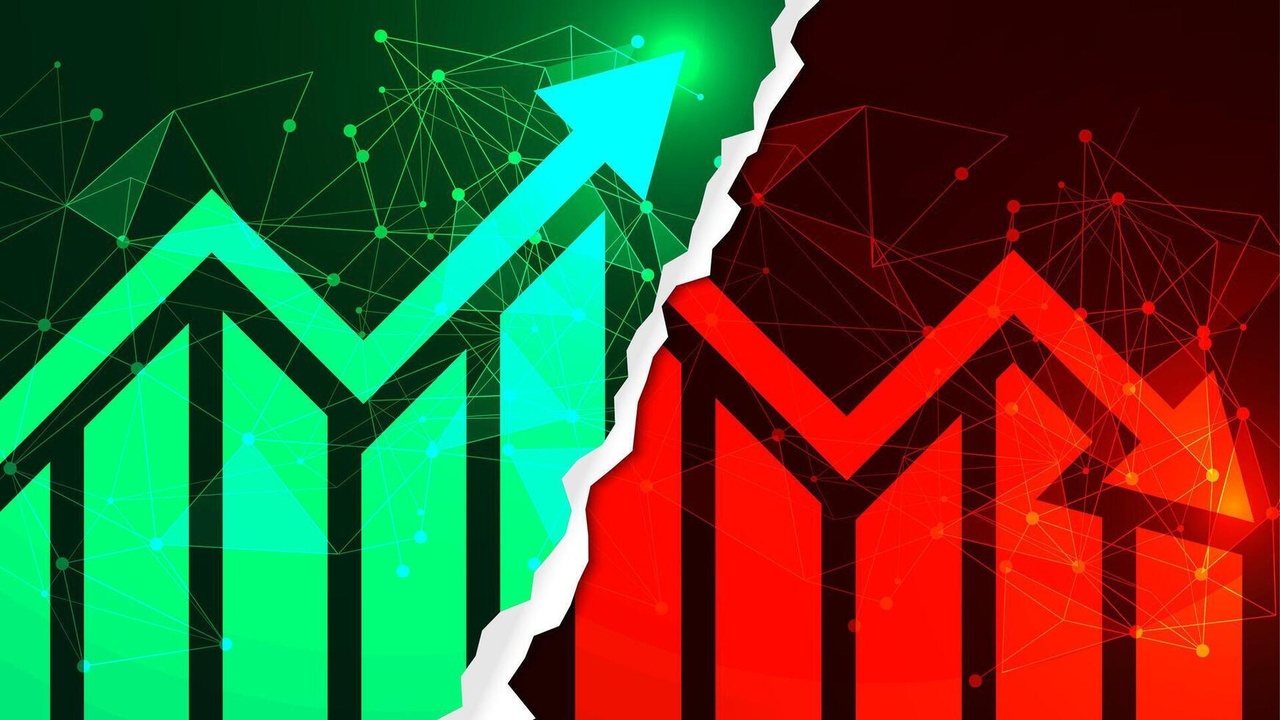
📊 Market Update (October 27, 2025)
Global markets open the week with a strong bullish tone, capitalizing on optimism from US inflation data which has fueled bets on Fed rate cuts and pushed indices to historical highs last week. Focus remains on earnings and monetary policy prospects.
🇺🇸 US Equities (Pre-market)
$SPX500 — Futures indicate a solid rise, extending gains recorded after the inflation data.
$DJ30 — Up, positive sentiment is widespread, including blue-chip stocks.
$NSDQ100 — Strong rally, the Tech sector is the main beneficiary of lower rate expectations.
💻 Tech & Growth Snapshot
$NVDA (-0,38 %) — Strongly up, AI stocks continue to ride the wave of optimism.
$GOOGL (+0,87 %) — Up, in line with the sector's performance.
$AVGO (+2,77 %) — Solid rise, the semiconductor complex remains a key driver.
$META (+1,61 %) — Up, the Communication Services sector is well-positioned.
$MSFT (+0,4 %) — Up, the stock benefits from Tech enthusiasm.
$QBTS (-5,58 %) — Up, new techstocks attempt to recover after correction.
$RGTI (-6,41 %) — Up, following the recovery in speculative sentiment.
$TSM (+0,6 %) — Solidly up, chip optimism is consolidated.
$$RR. (-0,4 %) — Up, the Industrial/Aerospace sector shows strength.
🛍️ Retail & Commerce
$AMZN (+0,17 %) — Strong rise, driven by *risk-onand consumer confidence.
$BABA (+0 %) — Up, positive global sentiment supports Asian stocks.
$CVNA (+0,36 %) — Up, the stock follows the trend.
$SHOP (-0,58 %) — Solid rise, retail tech is fully recovering.
⚕️ Health & Pharmaceutical
$LLY (-0,32 %) — Down slightly, the Pharma sector is experiencing mild profit-taking, penalized by the shift towards growth.
$HIMS (-1,86 %) — Up, in line with the general mood.
$INSM (-0,57 %) — Up, the biotech sector participates in the rally.
🇪🇺 Europe & Industrials
STOXX 600 — Decidedly positive*open, tracking the US sentiment.
GER40 — Solid rise, the German market is driven by optimism about rates.
$LDO (+0,25 %) — Up, the defense sector is mixed/positive.
$IBE (-0,44 %) — Down slightly, utilities are being sold off as defensive sectors in a risk-onenvironment.
$OKLO — Up, nuclear *new techfollows the rally.
🏦 Banking & Finance
$UCG (-1,1 %) , $ISP (-0,11 %) — Up, banks look to capitalize on positive sentiment.
$BAMI (-0,68 %)
$CE (-0,55 %) , $BPE (-1,38 %) — Up, financial stocks are positive.
$BBVA (-1,52 %) — Up, the financial sector participates in the rally.
$AXP (+0,02 %) , $V (+1,38 %) — Up, payment services benefit from consumer confidence.
💱 Forex
$DXY — The Dollar Index is moving in a slight decline, given rate cut expectations.
$EURUSD — Up, the Euro gains ground against the weaker Dollar.
$USDJPY — Stable, the Yen moves sideways.
💎 Commodities & Precious Metals
$GLD (-0,17 %) — Down, gold is under pressure due to *risk-onand diminished haven demand.
$CDE (-0,83 %) — Down, following the gold correction.
$BRENT / $WTI — Stable/Mixed, oil is cautious.
💰 Crypto
$BTC (-3,16 %) / $ETH (-3,63 %) — Up, cryptocurrencies benefit from *risk-onand liquidity expectations.
$TRX (-0,21 %) , $CRO (-0,21 %) — Up, the altcoin sector is positive.
🔎 Deep Dive: Optimism Returns (Rates & Earnings)
The week opens with widespread optimism, primarily fueled by the prospect of rate cuts*from the Federal Reserve and ongoing resilient corporate earnings. The weakness of the Dollar ($DXY) and the decline in Gold ($GLD) are the clearest signals of this prevailing *risk-onmood. The sector rotation is evident: defensive assets ($LLY, $IBE.MC) are giving way to Tech ($NVDA, $GOOGL) which has resumed leadership. Financial stocks ($AXP, $V) are capitalizing on consumer confidence, while *new technames ($QBTS, $RGTI) are recovering from recent lows.
For daily real-time market insights, deep dives, and trading discussions, follow me on X: https://x.com/ThomasVioli
To copy my portfolio, strategies, and complete trade insights, you can follow me on eToro: https://www.etoro.com/people/farlys
⚠️ Disclaimer: Past performance is not indicative of future results. Investing involves risks, including the loss of capital.

📊 Market Update (October 22, 2025)
Global markets are in a phase of sharp correction*and risk aversion. Caution over the unfolding earnings season is combining with persistent worries about the Dollar and slowing growth, pushing the vast majority of sectors lower.
🇺🇸 US Equities (Pre-market)
S&P 500 (Futures) — Moving in a decisive drop, markets are pricing in a strong negative open.
$DJ30 — Sharp decline, dragged down by industrial and financial stocks.
$NSDQ100 — Under heavy pressure, the tech sector is the hardest hit by renewed *risk-offsentiment.
💻 Tech & Growth Snapshot
$NVDA (-0,38 %) — Down, the semiconductor sector is under pressure.
$GOOGL (+0,87 %) — Down, the Communication Services sector is taking losses.
$AVGO (+2,77 %) — Down, the semiconductor complex is negative.
$META (+1,61 %) — Down, aligning with the tech sector's weakness.
$MSFT (+0,4 %) — Down, the stock is losing ground.
$QBTS (-5,58 %) — Sharp correction, speculative stocks are hit by profit-taking.
$RGTI (-6,41 %) — Down, following the *new techcorrection.
$TSM (+0,6 %) — Down, chip optimism isn't holding against macro pressure.
$RR. (-0,4 %) — Down, the industrial sector is weak.
🛍️ Retail & Commerce
$AMZN (+0,17 %) — Down, negative sentiment weighs on consumer confidence.
$BABA (+0 %) — Down, global uncertainties hit Chinese stocks.
$CVNA (+0,36 %) — Down, the stock is losing ground.
$SHOP (-0,58 %) — Down, retail tech is under pressure.
🇪🇺 Europe & Industrials
STOXX 600 — Decidedly negative*open, global pessimism is hitting Europe.
GER40 — Sharp drop, weakness is widespread.
$LDO (+0,25 %) — Down, the defense sector is cautious.
$IBE (-0,44 %) — Down, utilities are under pressure.
$OKLO — Down, the new tech stock is seeing profit-taking.
🏦 Banks & Finance
$UCG.MI, $ISP.MI — Down, the banking sector is under global pressure.
$BAMI.MI, $CE.MI, $BPE.MI — Down, Italian banks are giving up ground after the recent isolated rally.
$BBVA.MC — Down, the financial sector is impacted by the *risk-offmove.
$AXP, $V — Down, payment services are affected by consumer spending fears.
💱 Forex
$DXY — The Dollar Index is moving in a solid rally, acting as a haven in this environment.
$EURUSD — Down, the Euro loses ground against the Dollar.
$USDJPY — Up, the Yen is weakening due to the strong Dollar.
💎 Commodities & Precious Metals
$GLD (-0,17 %) — Sharp correction, gold is down amid profit-taking after the recent double top (near $4400$).
$BRENT / $WTI — Down, oil is under pressure due to global demand fears.
💰 Crypto
$BTC (-3,16 %) / $ETH (-3,63 %) — Down, cryptocurrencies are under heavy pressure and aligned with the equity *risk-offmove, testing critical support levels.
In Summary: Caution has turned into fear. Weakness is generalized, with investors retreating from growth assets and even traditional havens like Gold, primarily driven by the strength of the Dollar. Focus remains squarely on $NFLX$ and $TSLA$ earnings, which could set the tone for the rest of the week.
Follow the Analysis:
For daily real-time market insights, *deep dives*, and trading discussions, follow me on X: [https://x.com/ThomasVioli](https://x.com/ThomasVioli)
To copy my portfolio, strategies, and complete trade insights, you can follow me on eToro: [https://www.etoro.com/people/farlys](https://www.etoro.com/people/farlys)
⚠️ Disclaimer:*Past performance is not indicative of future results. Investing involves risks, including the loss of capital.
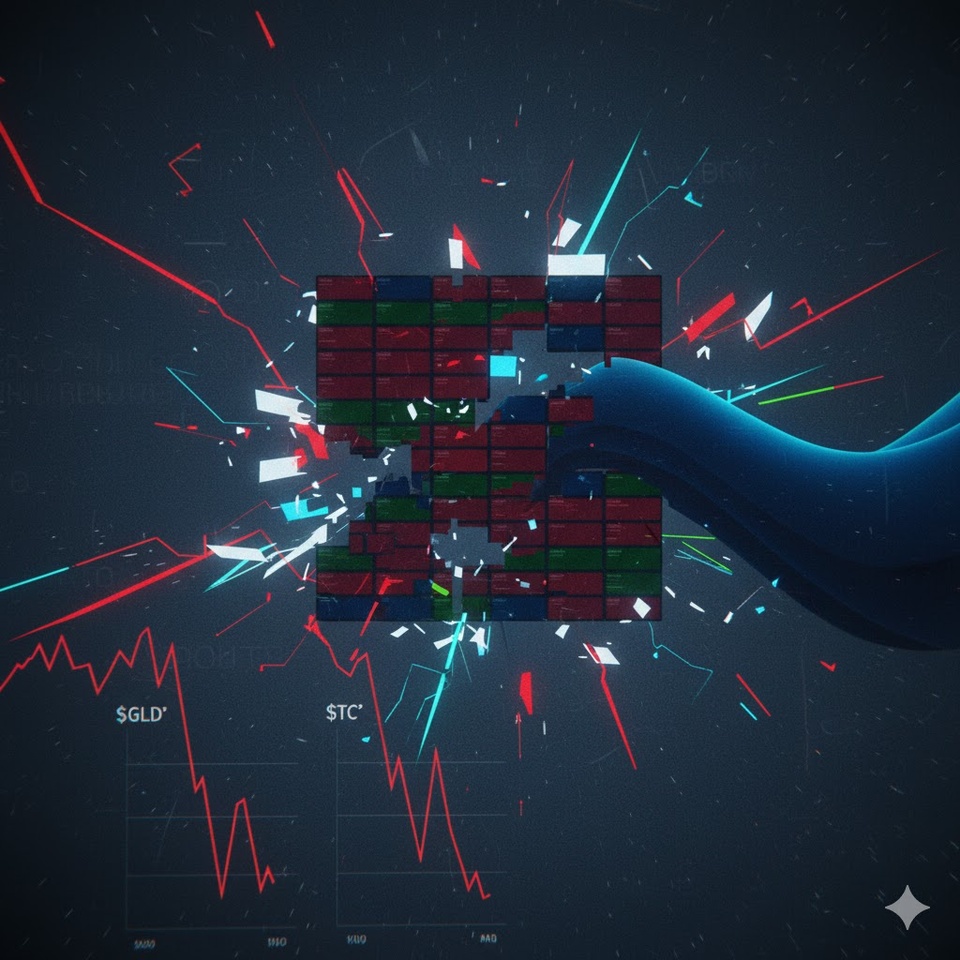
📊 Market Update (October 21, 2025)
🇺🇸 USA
$SPX500 — Futures indicate a slight decline, showing loss of momentum after yesterday's rally, driven by negative tech futures.
$DJ30 — Down slightly, affected by the cautious sentiment and renewed Dollar strength.
$NSDQ100 — Under pressure, the tech rally has faded, leading to pre-market weakness.
💻 Tech & Growth Snapshot
$NVDA (-0,38 %) — Down slightly (-0.10%), the chipmaker stock is struggling to hold onto yesterday's gains.
$GOOGL (+0,87 %) — Down (-0.44%), aligning with the cautious sentiment in the tech sector.
$AVGO (+2,77 %) — Up slightly (0.09%), showing resilience in the semiconductor space.
$META (+1,61 %) — Down slightly (-0.02%), the Communication Services sector is mixed.
$MSFT (+0,4 %) — Up slightly (0.02%), the stock is essentially flat.
$QBTS (-5,58 %) — Down (-0.53%), the quantum sector is actively correcting.
$RGTI (-6,41 %) — Down (-0.51%), in line with the broader *new techcorrection.
$TSM (+0,6 %) — Up (0.80%), showing strong resilience and helping to support the chip sector.
$RR. (-0,4 %) — Down slightly (-0.06%), the Industrial/Aerospace stock is mixed.
🛍️ Retail & Commerce
$AMZN (+0,17 %) — Up slightly (0.06%), essentially flat, following the mixed tech trend.
$BABA (+0 %) — Down (-1.99%), experiencing a clear drop, reflecting heavy selling in Chinese stocks.
$CVNA (+0,36 %) — Down slightly (-0.06%), losing ground.
$SHOP (-0,58 %) — Down (-0.64%), retail tech is under pressure.
⚕️ Health & Pharmaceutical
$LLY (-0,32 %) — Up slightly (0.01%), holding up better than the general market.
$HIMS (-1,86 %) — Stable (0.00%), in line with the cautious mood.
$INSM (-0,57 %) — Stable (0.00%), the biotech sector is mixed.
🇪🇺 Europe & Industrials
STOXX 600 — Opening solidly up, exceeding initial caution (resilience driven by defensive sectors).
GER40 — Up, showing resilience.
$LDO (+0,25 %) — Up slightly (0.38%), the defense sector is stable.
$IBE (-0,44 %) — Up (0.53%), the utilities sector is in the green, showing defensive appeal.
$OKLO — Down (-0.56%), the new tech stock is experiencing profit-taking.
🏦 Banking & Finance
$UCG (-1,1 %) — Up slightly (0.13%), Italian banks are mixed.
$ISP (-0,11 %) — Up slightly (0.16%), showing a modest gain.
$BAMI (-0,68 %)
$CE (-0,55 %) , $BPE (-1,38 %) — BPER Banca ($BPE.MI$) is in a massive rally (6.55%), strongly counter-trending the sector; $CE.MI$ is up $1.36\%$.
$BBVA (-1,52 %) — Down (-0.81%), showing clear pressure and vulnerability today.
$AXP (+0,02 %) — Down (-0.26%), ahead of today's earnings report.
$V (+1,38 %) — Down (-0.19%), following cautious sentiment in the payments sector.
$CS (+0,27 %) — Up slightly (0.15%), the financial services sector is mixed.
🌏 Asia
$JPN225 — Close in a solid gain, with the Nikkei hitting $50,000$.
$KOSPI — Close mixed/stable, Korean tech holds up.
$HK50 — Up, the index is recovering.
$CHINA50 — Up, tracking positive global sentiment.
💱 Forex
$EURUSD — Down, the Euro loses ground as the Dollar recovers.
$GBPUSD — Down, the Pound is under pressure.
$USDJPY — Solidly up, the Yen is falling as the Dollar makes a strong recovery.
$DXY — The Dollar Index is moving sharply higher, breaking the risk-on sentiment.
💎 Commodities & Precious Metals
$GLD (-0,17 %) — Stable (0.00%), gold is pausing after yesterday's correction.
$CDE (-0,83 %) — Stable (0.00%), following the gold correction.
$BRENT — Down slightly, oil drops to a 5-month low.
$WTI — Losing ground, in line with Brent.
💰 Crypto
$BTC (-3,16 %) — Down, crypto is undergoing a significant correction.
$ETH (-3,63 %) — Down, following Bitcoin.
$TRX (+7,69 %) — Down, the altcoin sector is negative.
$CRO (-0,21 %) — Down, in line with overall negative sentiment.
🚀 Space & New Tech
$RKLB (-1,18 %) — Up (2.75%), strong counter-trend move in high-beta growth stocks.
🔎 Deep Dive: The Market Divergence
The key theme today is divergence. US indices futures are soft, but specific European stocks are surging (BPER Banca is up over $6\%$) in a massive counter-trend move, highlighting local corporate strength despite global caution. The New Tech sector is mixed: $TSM$ is surprisingly up, while $NVDA$ is slightly down. The Dollar ($DXY$) continues its strength, penalizing risk assets like Bitcoin ($BTC$), while Utilities ($IBE.MC$) and specific banks demonstrate insulation. Today is a major test with $NFLX and $LMT reporting.
For daily real-time market insights, *deep dives*, and trading discussions, follow me on X: https://x.com/ThomasVioli
To copy my portfolio, strategies, and complete trade insights, you can follow me on eToro: https://www.etoro.com/people/farlys
⚠️ Disclaimer: Past performance is not indicative of future results. Investing involves risks, including the loss of capital.

Valores en tendencia
Principales creadores de la semana






